#Proteins
Text
A spectrum of neurodegenerative diseases, including frontotemporal dementia (FTD), progressive supranuclear palsy (PSP), and corticobasal degeneration (CBD) are due to the accumulation of abnormal, misfolded tau proteins in the brain.
A team of researchers has found potential ways to interrupt this process by targeting “sticky” sites along the long form of mutated tau, preventing the misfolding and spreading of the neurofibrillary tangles.
Continue Reading.
49 notes
·
View notes
Text

'A moment of disgust to force myself through'
623 notes
·
View notes
Text
Scientists in China have synthesized spider silk from genetically modified silkworms, producing fibers six times tougher than the Kevlar used in bulletproof vests. The study, published September 20 in the journal Matter, is the first to successfully produce full-length spider silk proteins using silkworms. The findings demonstrate a technique that could be used to manufacture an environmentally friendly alternative to synthetic commercial fibers such as nylon.
"Silkworm silk is presently the only animal silk fiber commercialized on a large scale, with well-established rearing techniques," said Mi. "Consequently, employing genetically modified silkworms to produce spider silk fiber enables low-cost, large-scale commercialization."
Scientists have eyed spider silk as an enticingly sustainable alternative to synthetic fibers, which can release harmful microplastics into the environment and are often produced from fossil fuels that generate greenhouse gas emissions. But turning to nature for alternatives isn't without challenges. Previously developed processes for spinning artificial spider silk have struggled to apply a surface layer of glycoproteins and lipids to the silk to help it withstand humidity and exposure to sunlight -- an anti-aging "skin layer" that spiders apply to their webs.
Read more.
83 notes
·
View notes
Text
This protein has a binding site? I didn't even know it was trans?
#biology memes#biology#proteins#transgender#transmasc#Remeber to take the substrate out after 8 ours of binding or youll get denatured#binding
90 notes
·
View notes
Text



#dungeon meshi#delicious in dungeon#dun meshi#laios dungeon meshi#dunmeshi laios#izutsumi#anime#anime and manga#anime fanart#proteins#protein Fel d 1#chicken#genotoxicity#egg yolk#anti-Fel d 1 specific IgY (AFD1)#funny anime#senshi#dungeon food
31 notes
·
View notes
Text
Exploring the Marvels of Biological Macromolecules: The Molecular Machinery of Life (Part 3)
Proteins and Enzymes: Catalysts of Molecular Reactions
Proteins are the central players in macromolecular interactions. Enzymes, a specialized class of proteins, catalyze biochemical reactions with remarkable specificity. They bind to substrates, facilitate reactions, and release products, ensuring that cellular processes occur with precision.
Protein-Protein Interactions: Orchestrating Cellular Functions
Proteins often interact with other proteins to form dynamic complexes. These interactions are pivotal in processes such as signal transduction, where cascades of protein-protein interactions transmit signals within cells, regulating diverse functions such as growth, metabolism, and immune responses.
Protein-Ligand Interactions: Molecular Recognition
Proteins can also interact with small molecules called ligands. Receptor proteins, for instance, bind to ligands such as hormones, neurotransmitters, or drugs, initiating cellular responses. These interactions rely on specific binding sites and molecular recognition.
Protein-DNA Interactions: Controlling Genetic Information
Transcription factors, a class of proteins, interact with DNA to regulate gene expression. They bind to specific DNA sequences, promoting or inhibiting transcription, thereby controlling RNA and protein synthesis.
Membrane Proteins: Regulating Cellular Transport
Integral membrane proteins participate in macromolecular interactions by regulating the transport of ions and molecules across cell membranes. Transport proteins, ion channels, and pumps interact precisely to maintain cellular homeostasis.
Cooperativity and Allosteric Regulation: Fine-Tuning Cellular Processes
Cooperativity and allosteric regulation are mechanisms that modulate protein function. In cooperativity, binding one ligand to a protein influences the binding of subsequent ligands, often amplifying the response. Allosteric regulation occurs when a molecule binds to a site other than the active site, altering the protein's conformation and activity.
Interactions in Signaling Pathways: Cellular Communication
Signal transduction pathways rely on cascades of macromolecular interactions to transmit extracellular signals into cellular responses. Kinases and phosphatases, enzymes that add or remove phosphate groups, play pivotal roles in these pathways.
Protein Folding and Misfolding: Disease Implications
Proteins must fold into specific three-dimensional shapes to function correctly. Misfolded proteins can lead to Alzheimer's, Parkinson's, and prion diseases. Chaperone proteins assist in proper protein folding and prevent aggregation.
References
Voet, D., Voet, J. G., & Pratt, C. W. (2016). Fundamentals of Biochemistry: Life at the Molecular Level. Wiley.
Lehninger, A. L., Nelson, D. L., & Cox, M. M. (2017). Lehninger Principles of Biochemistry. W. H. Freeman.
Berg, J. M., Tymoczko, J. L., & Stryer, L. (2002). Biochemistry. W. H. Freeman

#science#college#biology#education#school#medicine#student#doctors#health#healthcare#proteins#molecular biology#molecular structure#chemestry#chemistry
96 notes
·
View notes
Text
New publication out!
We were curious what happens with the lipid membrane if proteins are inside. As a model of membrane proteins we use transmembrane peptides with neutral and positive charge. The charges turn out to be quite crucial in the peptides influence on the lipids.
publication link: https://doi.org/10.1016/j.colsurfb.2024.113765…
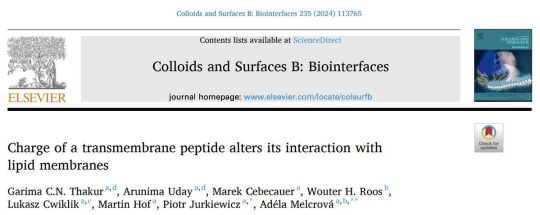
All transmembrane peptides hinder mobility of lipids around. The positive charges in the peptide make this hindering a long range influence.
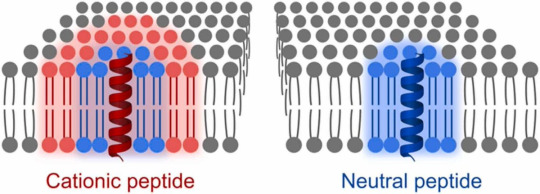
The membrane with the positive peptides then has heterogeneities in the lipid mobility. This hampers free rearrangement of lipids and leads to lower ability to seal ruptures. You can see below how the membrane stays fragmented after indentations with AFM (atomic force microscope), which is basically a very tiny tip that scans the surface of the membrane for images and can also push through it to test mechanical stability.

For comparison this is how it looks like with a membrane without any peptides. The mebrane seals the ruptures induced by the AFM tip and recovers its round shape. The same happens if we have a neutral, non-charged, peptide.
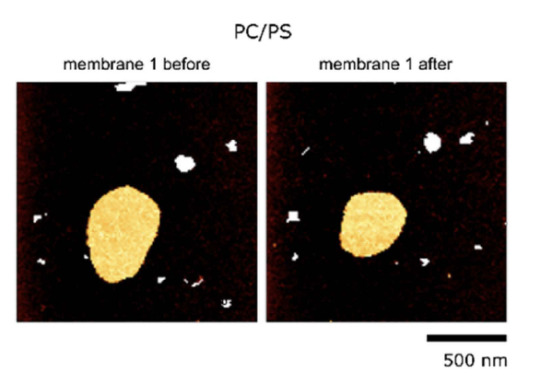
With this work we highlight the importance of including charges of proteins and peptides in membrane model studies.
And last but not least...
This is the very first time I am the last corresponding author of a publication. I am immensely proud on myself!
#science#women in science#research#biophysics#afm#fluorescence#simulations#peptides#proteins#cell membranes#publication#collaboration#corresponding author#proud#original content
14 notes
·
View notes
Text
Chemistry behind "miracle fruit"
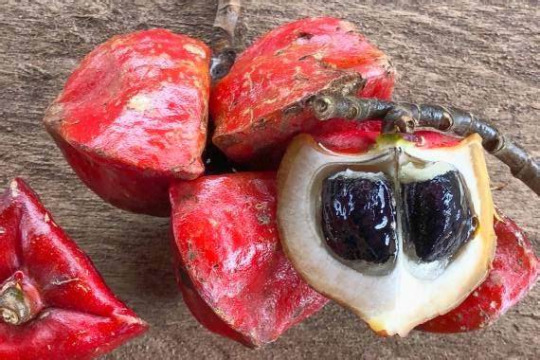
Thaumatococcus daniellii, native to the tropical rainforests of West Africa, bears triangular fleshy fruits that turn red when fully ripe, earning it the name "miracle fruit". What sets it apart is the sweet-tasting protein found in its fleshy part called thaumatin.

Thaumatin is one of the sweetest proteins known, considered a safe natural sweetener. Comprising six proteins, primarily Thaumatin I and II, it binds with sweet taste receptors (TAS1R3) on the human tongue, imparting a "sweet" sensation. Thaumatin's sweetness is about 3000 to 8000 times that of sucrose, though it acts slowly and has a long-lasting effect. Currently, it is used as a low-calorie sweetener and flavor enhancer in candies, chewing gums, and other food products.
#chemistry#organic chemistry#proteins#sweetener#did you know#amazing facts#stemblr#chemblr#africa#west africa#fruit chemistry
8 notes
·
View notes
Text
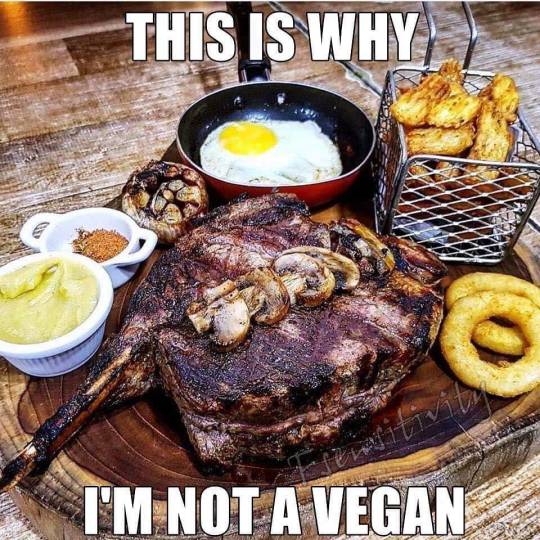
#beef it's whats for dinner 🥩#not for me#carnivore#omnivores#ribeye steak#steak with all the trimmings#food porn#proteins#rogue racer#country style#delicious foods#rebelxr
17 notes
·
View notes
Photo

The start codons for transcription to make proteins
#dna#biology#proteins#research#drake#humour#humor#insidesjoke#uploads#memes#meme#funny#relatable#jokes#reddit memes#student memes#discord memes#cartoons#science#low
26 notes
·
View notes
Text
Researchers have revealed the regulatory mechanism of a specific protein that plays a key role in balancing the immune response triggered by viral infections in mammal cells. These findings could help drive the development of antiviral therapies and nucleic acid medicines to treat genetic disorders. The research is published in the journal Nucleic Acids Research.
For cells to protect themselves from viral infections, a series of immune responses typically occur, including programmed cell death called apoptosis and interferon signaling. While apoptosis is a normal process, that occurs with or without the presence of viral molecules, following a cascade of steps to end with the death of a cell—which might not sound advantageous to the host—it can help prevent the reproduction of abnormal cells, including those infected by viruses, and eliminate them from the body.
Continue Reading.
42 notes
·
View notes
Text
mRNA Translation
-- process of translating sequence of messenger RNA
-- messenger RNA = mRNA
-- turns sequence into amino acids
-- ribosome reads mRNA sequence in groups of three
-- three mRNA letters = codon
-- codons code for an amino acid
-- information begins in the DNA
-- transcribed into messenger RNA
-- translated from messenger RNA to protein
-- information is being transferred from one form to another
-- ribosome travels along the mRNA
-- detects the code as it goes
-- decides what amino acid to add based on the code
-- adds that amino acid to the polypeptide chain
-- this polypeptide chain becomes the protein
.
Patreon
#studyblr#notes#biology#bio#bio notes#biology notes#genetics#genetics notes#transcription#translation#mrna#messenger rna#rna#ribonucleic acid#dna#deoxyribonucleic acid#polypeptides#proteins#making proteins#life science#science#health science#medblr#medical notes#med notes#biochemistry#biochem#biochemistry notes#biochem notes#polypeptide chains
9 notes
·
View notes
Text
A study of 800-year-old frozen mummies in Mongolia has revealed that yak milk was the drink of choice for high status members of the Mongol Empire.
26 notes
·
View notes
Text

Adhesives from feathers
Adhesives are almost always based on fossil raw materials such as petroleum. Researchers at Fraunhofer have recently developed a process that allows to utilize keratin for this purpose. This highly versatile protein compound can be found, for instance, in chicken feathers. Not only can it be used to manufacture a host of different adhesives for a variety of applications, but the processes and end products are also sustainable and follow the basic principles underlying a bioinspired circular economy. The project, developed together with Henkel AG & Co. KGaA, addresses a billion-dollar market.
Adhesives are found nearly everywhere: in sports shoes, smartphones, floor coverings, furniture, textiles or packaging. Even auto windshields are glued into place using adhesives. Experts recognize more than 1,000 different types of adhesives. These can bond almost every imaginable material to another. Adhesives weigh very little and so lend themselves to lightweight design. Surfaces bonded with adhesive do not warp because, unlike with screw fastenings, the load is distributed evenly. Adhesives do not rust, and seal out moisture. Surfaces bonded with adhesive are also less susceptible to vibration. Added to which, adhesives are inexpensive and relatively easy to work with.
Read more.
22 notes
·
View notes
Text
"Researchers at the University Medical Center Göttingen (UMG) have discovered a new quality control mechanism that regulates energy production in human cells. This process takes place in mitochondria, the power plants of the cell."
"Mitochondria play a central role for cellular metabolism. Therefore, malfunctions of the mitochondria lead to serious, often fatal, heart, muscle or nerve diseases. Mitochondria are surrounded by two membranes, an outer and an inner one, which separate them from the surrounding cell. The final conversion of food into energy takes place in the inner membrane. Proteins are involved in this process.
Central proteins for energy production are formed in the mitochondria, transported to the inner membrane and inserted there. The protein OXA1L is mainly responsible for the insertion of proteins into the membrane, where larger complex structures are formed with other proteins that interact with each other and ensure energy production. How the incorporation and assembly of these structures works in detail has been poorly investigated thus far."
continue reading article
#energy#matter#body#cells#biology#microbiology#molecular biology#proteins#health#mitochondria#metabolism#interaction#organism#energy production#quality control#science#research
5 notes
·
View notes
Text

92 notes
·
View notes